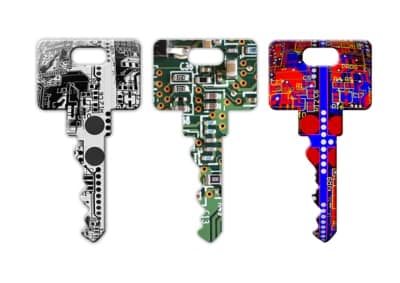It can be daunting to consider outsourcing IT services for your company. After all, not only do your operations depend on having reliable systems, but so does your company’s security, compliance, and productivity.
In many circumstances, outsourcing your IT—with the right outsourced IT services company—can save you time, improve your reliability, and increase productivity. However, if you make the wrong hire, you face several risks of outsourcing IT services.
5 Risks of Outsourcing IT Services
Some of the risks associated with outsourcing IT services include inexperienced staff, misaligned software partnerships, hidden fees, or unreliable service.
1 – Inexperienced Staff
One of the risks of outsourcing IT services is risking having inexperienced staff managing your IT. When you hire an in-house IT team, you have the benefit of interviewing and getting references for every individual on the team—however, this is only effective insofar that you have the knowledge to be able to verify new hires’ experience.
Choosing outsourced IT services means you don’t get much—if any—insight into the team members managing your account. Instead, it’s important to verify the knowledge and experience of the outsourced IT company as a whole. Look for case studies, call references, and read online reviews.
2 – Hidden Costs
Another risk of outsourced IT services is hidden costs. Some IT companies will charge a monthly fee for basic IT services but will rack up surcharges for support, additional software charges, consulting on any opportunity not included in your contract, add fees for hardware maintenance, after-hours or holiday customer service, and more. This is why it’s important to read your contract carefully before signing. Make sure to ask any references whether they’ve experienced hidden fees and, if so, for what.
3 – Unresponsive Support Team
Another risk of hiring an outsourced IT company is the time it takes to receive support and troubleshoot problems. Since an in-house IT team is typically on-site, it makes it easier to seek assistance or to produce fixes in case of system problems.
Many outsourced IT companies offer remote desktop assistance which can help troubleshoot almost any problem—although this is only helpful when the support team answers. Make sure any outsourced IT company you hire is committed to fixing problems quickly, answers phones with live people, and has IT engineers available for more complicated problems—in a timely manner.
4 – Biased Software Decisions
While on the outside it may seem like software partnerships between outsourced IT companies and software companies are a good thing as they often result in a discount for the end-user (while providing a kickback to the outsourced IT services company), this is not always the case. Software partnerships often diminish the company’s ability to stay objective in picking the right software solution for you.
Any company that has tried to pigeonhole themselves into a CRM or task manager that wasn’t the right fit for their company understands the risk here. A well-aligned software is exponentially more productive than software that doesn’t actually fit your existing needs.
5 – Decreased Security
Another risk of hiring an unreputable outsourced IT company is decreased security. This may come in the form of outdated technologies, antiquated security strategies, unfamiliarity with the most recent security threats and best practices, and more.
However, this risk is pertinent to in-house IT teams as well. The best option to maintain the best network security, backup and recovery systems, and disaster preparedness is to partner with a reputable IT expert. Better-known outsourced IT companies are more in the spotlight making it even more necessary to maintain high standards of safety and security. They’re also more likely to be able to attract and maintain top IT talent.
Let’s Talk
Are you considering whether outsourced IT solutions are right for your company? We understand the decision may be difficult, and we’re here to help you make the best decision for your company.
Network Coverage offers customized outsourced IT packages. Whether you’re looking to augment your existing IT team so they can focus on what they do best or looking to replace your in-house IT needs with a dependable, trustworthy solution, Network Coverage can help.
Reach out today to speak with an outsourced IT specialist.
[mkd_button size=”large” type=”” text=”Let’s Talk” custom_class=”” icon_pack=”font_awesome” fa_icon=”” link=”https://netcov.com/contact-us/” target=”_blank” color=”” hover_color=”” background_color=”” hover_background_color=”” border_color=”” hover_border_color=”” font_size=”” font_weight=”” margin=””]

 device help, as many companies need individual cell phone use, or just having employees use their own phones for business. This can sometimes lead to a breach in security if they are not connected to a secure connection.
device help, as many companies need individual cell phone use, or just having employees use their own phones for business. This can sometimes lead to a breach in security if they are not connected to a secure connection.
 flow of information as well as sensitive data and systems is a complex and tedious task. Keeping up with updated policies and procedures as well as applications and software is paramount to keeping data secure.
flow of information as well as sensitive data and systems is a complex and tedious task. Keeping up with updated policies and procedures as well as applications and software is paramount to keeping data secure. storing information and programs such as the Adobe Creative Software makes it impossible to store if you don’t have those programs on your home computer.
storing information and programs such as the Adobe Creative Software makes it impossible to store if you don’t have those programs on your home computer. through.
through. which backup plan is best for you. As a personal user, your needs may be entirely different and so using a smaller, easier to use plan may be the best option.
which backup plan is best for you. As a personal user, your needs may be entirely different and so using a smaller, easier to use plan may be the best option.